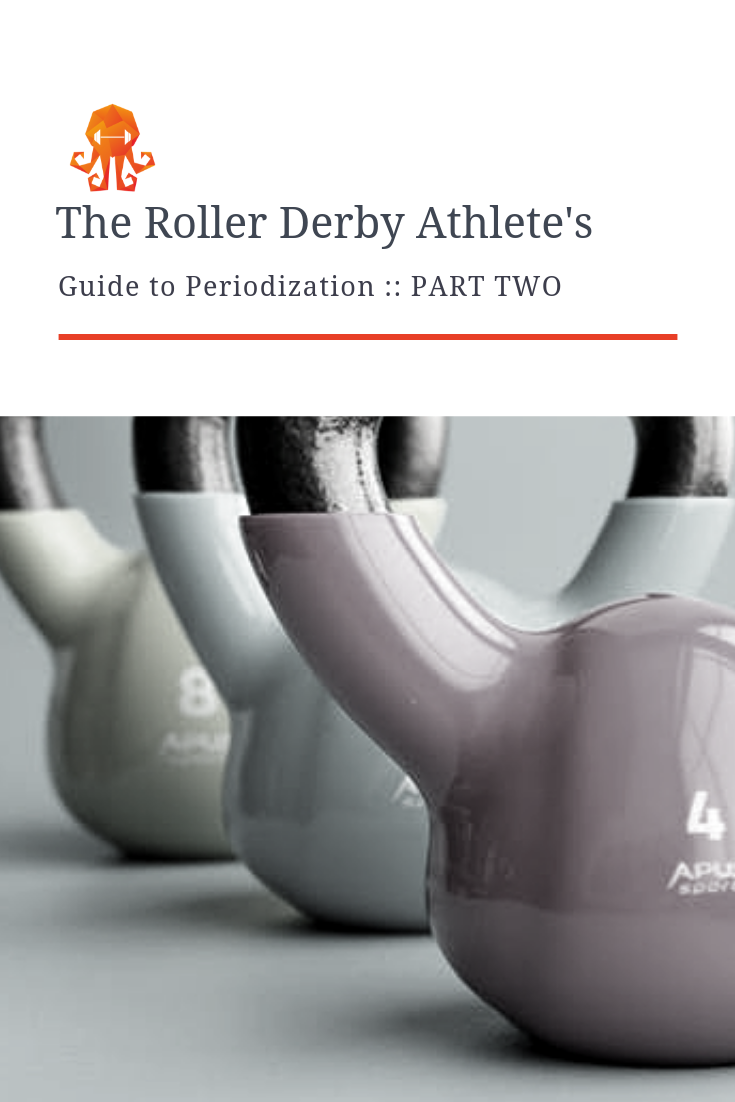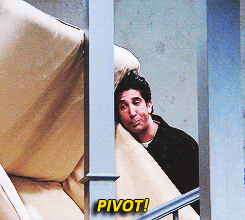
At the beginning of January, I started a pre-season prep challenge with about 40 skaters. It’s been going great (!) but we’re approaching that transition from pre-season, where you can feasibly train a million times a week #becausereasons, to the actual season.
Where, you know, you can’t train THAT much without serious repercussions.
*panic ensues*
I don’t know how many coaching calls I did near the end of that month wherein all people wanted to talk about is “WHAT HAPPENS NOW?” It’s been at least 10. Which feels like a lot. But the question isn’t just “what happens now?” it’s also “what happens next?” and then “what happens after that?” ad infinitum until the end of time.
Because skaters seem to (finally!) be realizing that periodization doesn’t just apply from year-to-year or part of the season to part of the season, it can even be applied from week-to-week.
I started to wonder if a template could exist for training across the in-season. And if it COULD EXIST, maybe I could create it.
BREAKING DOWN THE MESOCYCLE
In the first part of the athlete’s periodization guide, I gave the broad brush strokes of what makes up a periodized training season: macrocycles, mesocycles, microcycles, and training days.
And while what you do in the gym (training days) and what you schedule for each week (microcycles) really do matter, the bulk of your goal chasing is going to come in your mesocycle.
- What are you doing month-to-month?
- How do your months fit together?
- And when are you going to pivot toward a different goal?

Mesocycles shouldn’t actually be looked at JUST as mesocycles, though.
Each month needs to connect to the month before it and the month after it in a meaningful way. In the last blog I talked about it being a ladder, but mesocycles are also like a train.
Each month is a car on the train and the cars have to match up to each other in order for the train to stay together and keep moving forward relatively smoothly.
That doesn’t mean that EVERY CAR looks the same. Or that every month has to focus on the same training modality. But it does mean that cars have to connect in some way.
My best advice for skaters is to chunk their months/mesocycles together. Spend 2-3 mesocycles focusing on a similar goal and training modality (say power) with each mesocycle chasing that goal in a different way.
For example, mesocycle 1 might be more strength-based with a few power moves interspersed. Mesocycle 2 might be equally split between strength and power moves. Mesocycle 3 might move into MORE power moves with a few supportive strength moves.
And, of course, every mesocycle includes prehab BECAUSE I SAID SO.
WHAT DO I FOCUS ON?
The question of what to focus on in any specific mesocycle, or block of mesocycles, really comes down to what you need or want to work on. It could be something specific that will help you become a more effective skater or it might be something unrelated. Like that double bodyweight deadlift I hear some people are after.
None of these answers are right or wrong.
But pursuing any major training goal, whether it’s fast feet or 15 pull-ups, means focusing on that training goal for a time. (Usually longer than a month, but that’s anecdotal from years of training folks.)
It’s important to ask: WHAT ARE YOU TRAINING FOR?
This question is really basic. And I do think roller derby athletes ask themselves this question frequently. But I also think that it’s a question that we answer on a really superficial level when it comes to what we actually choose to focus on in the gym.
BUT MICROCYCLES MATTER, TOO.
It’s easy to think about periodization in terms of months and seasons. It’s simpler to understand how goals change and grow over long stretches of time, but periodization isn’t just for month-to-month or year-to-year.
You can periodize your microcycles, too. Which means that your training can differ from week-to-week in a way that helps you chase your goals hard without hitting burnout.
Within the confines of the in-season, there are 4 different types of microcycles that you can go through. Each week is based on where you are during your in-season and how you feel physically:
1) DELOAD
A deload week is a week for relaxing, resting, recovering, and taking care of yourself. You’re not REALLY attending the gym with any serious goals and you could probably cut it out of the week altogether. Deload weeks are more for mobility, prehab, yoga, walking, sleeping, etc.
2) MAINTENANCE
A maintenance week is a hold-steady week in the gym. You’re doing your normal training focused on your main goals. You are working hard, but it’s not your maximum training capacity. This is the type of training you could maintain for a while without getting fried or burnt out.
3) RAMP
Ramp weeks are exactly what they sound like. You start at maintenance and press the gas a little bit. You’re working hard, you’re pushing yourself (a little), and you’re actively attempting to make gains on things like weight selection and/or volume.
4) PEAK
Peak weeks are high capacity weeks. You’re working hard, actively pursuing significant improvement, and feeling like you pushed hard at the end of the week. This isn’t sustainable for the long term, probably, but it’s important to have it in your repertoire.
Each one of these weeks has a place in your competitive season training plan. It’s when to use them that seems to confuse folks the most. Here’s a quick and easy template for periodizing your program from week-to-week, specifically around your games:
Other sample microcycle schedules for various game schedules below. The // symbol indicates that you could choose between a few different options during that week.
2 weeks in between games:
- week 1 (week after previous game) = maintenance // deload
- week 2 (game week) = maintenance // deload
3 weeks in between games:
- week 1 (week after previous game) = maintenance // deload
- week 2 = ramp // peak
- week 3 (game week) = maintenance // deload
5 weeks in between games:
- week 1 (week after previous game) = maintenance // deload
- week 2 = ramp
- week 3 = ramp // peak
- week 4 = ramp // peak
- week 5 (game week) = maintenance // deload
6 weeks in between games:
- week 1 (week after previous game) = maintenance // deload
- week 2 = ramp
- week 3 = ramp // peak
- week 4 = ramp // peak
- week 5 = ramp
- week 6 (game week) = maintenance // deload
And, well, you get the idea.
The whole goal is to create that gentle wave of training that I mentioned in the video => Working hard to climb the hill to your peak training, then coasting back down into your games for peak performance.
And liberally sprinkling deloads as needed to avoid burnout. Seriously.
Want more?
If you’re interested in more exclusive content, access to my FREE resource library, and the slightly weird workings of my inner mind, you can sign up for the Iron Octopus Fitness email list HERE. Wherein I harass you weekly with all things intelligent cross training, mindset, and…other.

